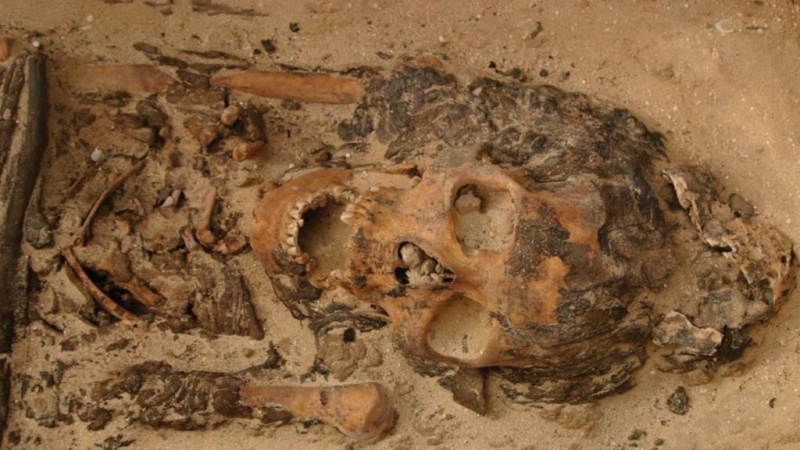The First Evidence of 'Head Cones' Found in 3,300-Year-Old Egyptian Tomb
Ancient Egyptians have long been depicted wearing so-called head cones, but until now, archaeologists had no physical evidence of their existence. Now, two such head cones, made of wax, have been discovered on the skulls of two individuals buried about 3,300 years ago at the site of Amarna in Egypt.
Between 1550 B.C. and 30 B.C., Egyptian art depicted people wearing what look like cones on their heads. Because no examples of these cones had ever been found, archaeologists wondered whether they actually existed or were an artistic motif that had no basis in reality (similar to people with halos over their heads depicted in Christian art).
This new discovery proves that the cones did exist, and provides information on what the cones were made of, a team of archaeologists wrote in a paper published Dec. 10 in the journal Antiquity.
Head cones
The two cone-wearing individuals were found in separate plots in cemeteries at Amarna. One individual, a woman, was found in 2010; she had died when she was between 20 and 29 years of age. She had "long, thick braids featuring many extensions and end-curls" and "the cone was found in situ, placed on top of the head over the well-preserved hair," the archaeological team wrote in the Antiquity article. The researchers noted that the "overall shape [of the cone] seems to be that of a low dome," originally measuring about 3.1 inches (80 millimeters) high and 3.9 inches (100 mm) across.
Related: 10 Iconic Historical Hairstyles (And Why We Love Them)
The other person buried with a cone, found in 2015, was between 15 and 20 years of age when he or she died (the sex is not known). This individual appeared to have their "hair ended in open, probably unstyled curls," with no braids, the archaeologists wrote, noting that the grave had been robbed at some point.
In both cases, the cones appear cream colored; spectroscopic analysis indicated that the cones were likely made of beeswax. Neither individual appears to have been wealthy; an evaluation of their bones suggested that they both did labor-intensive work and suffered from shortages of food at times in their life.
Related Posts

